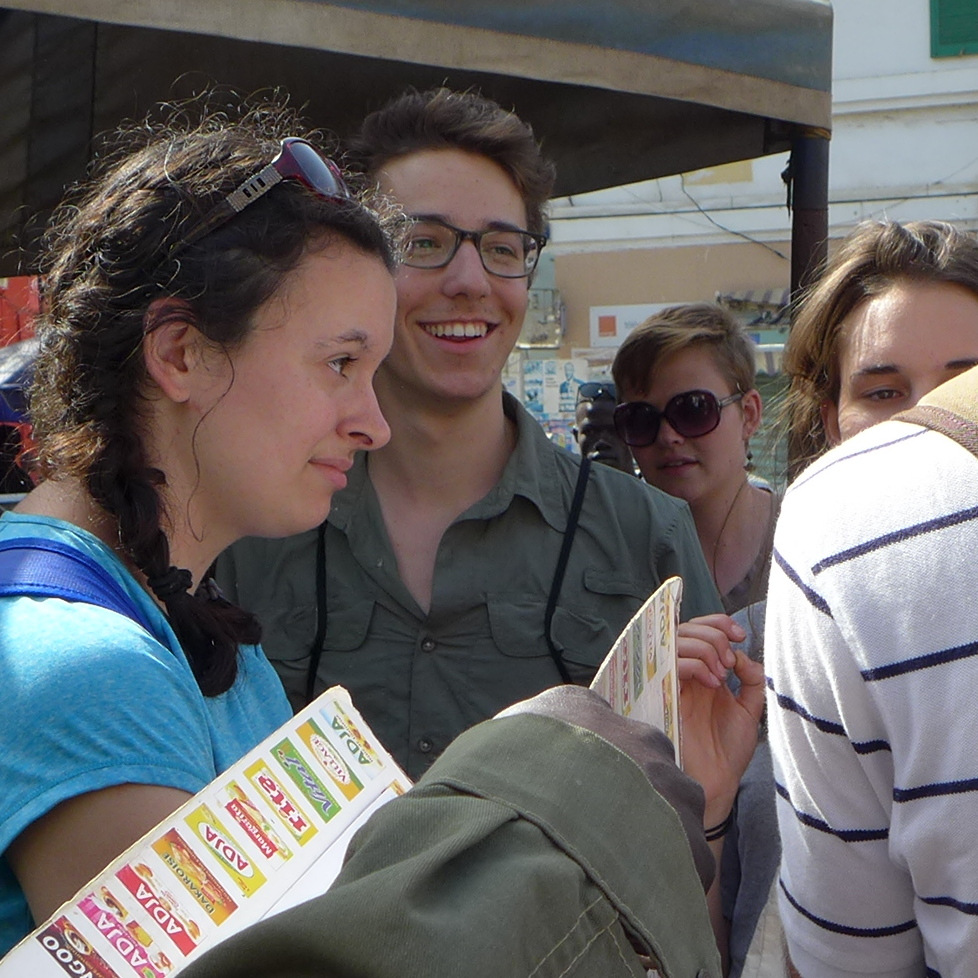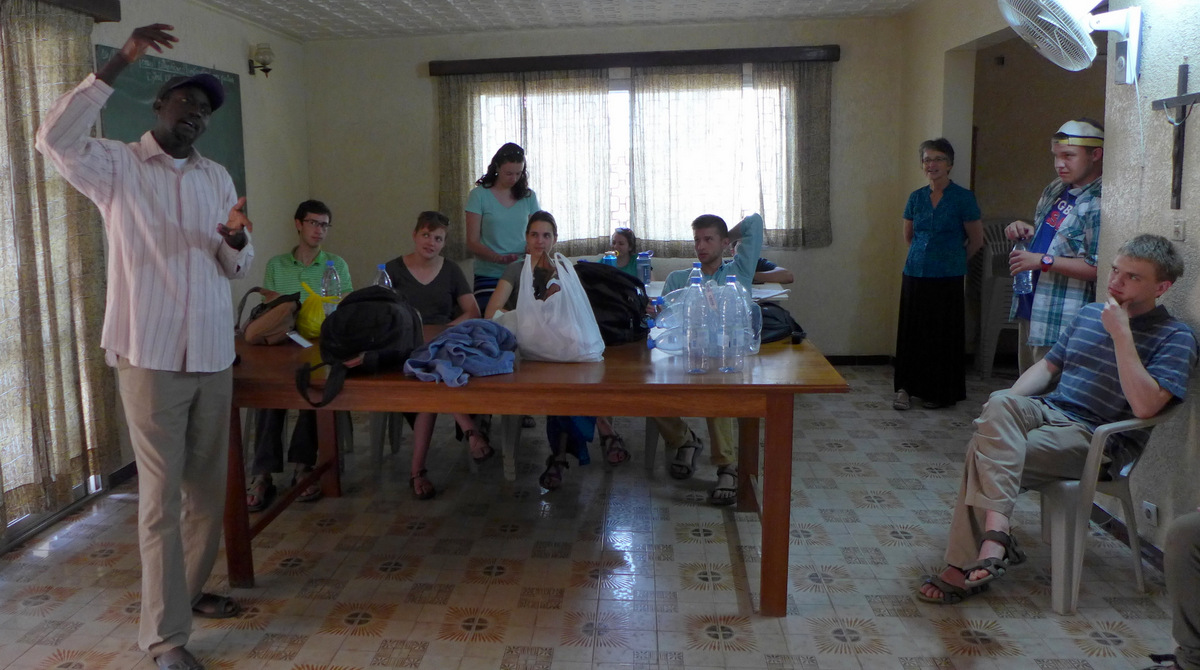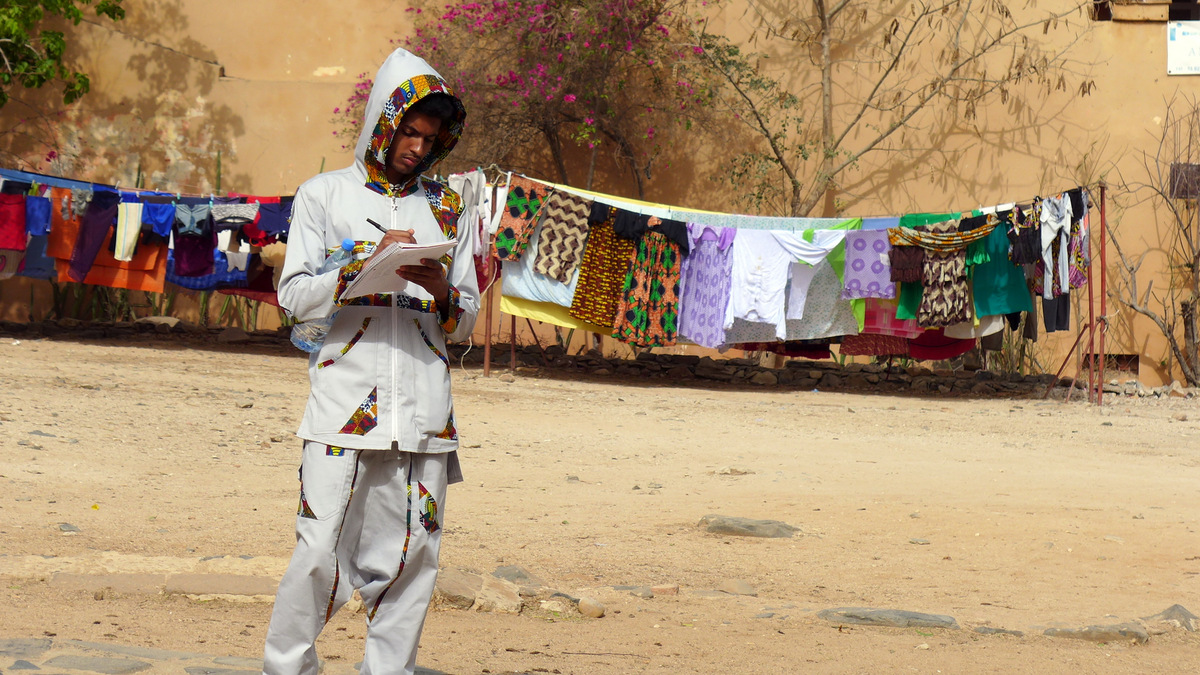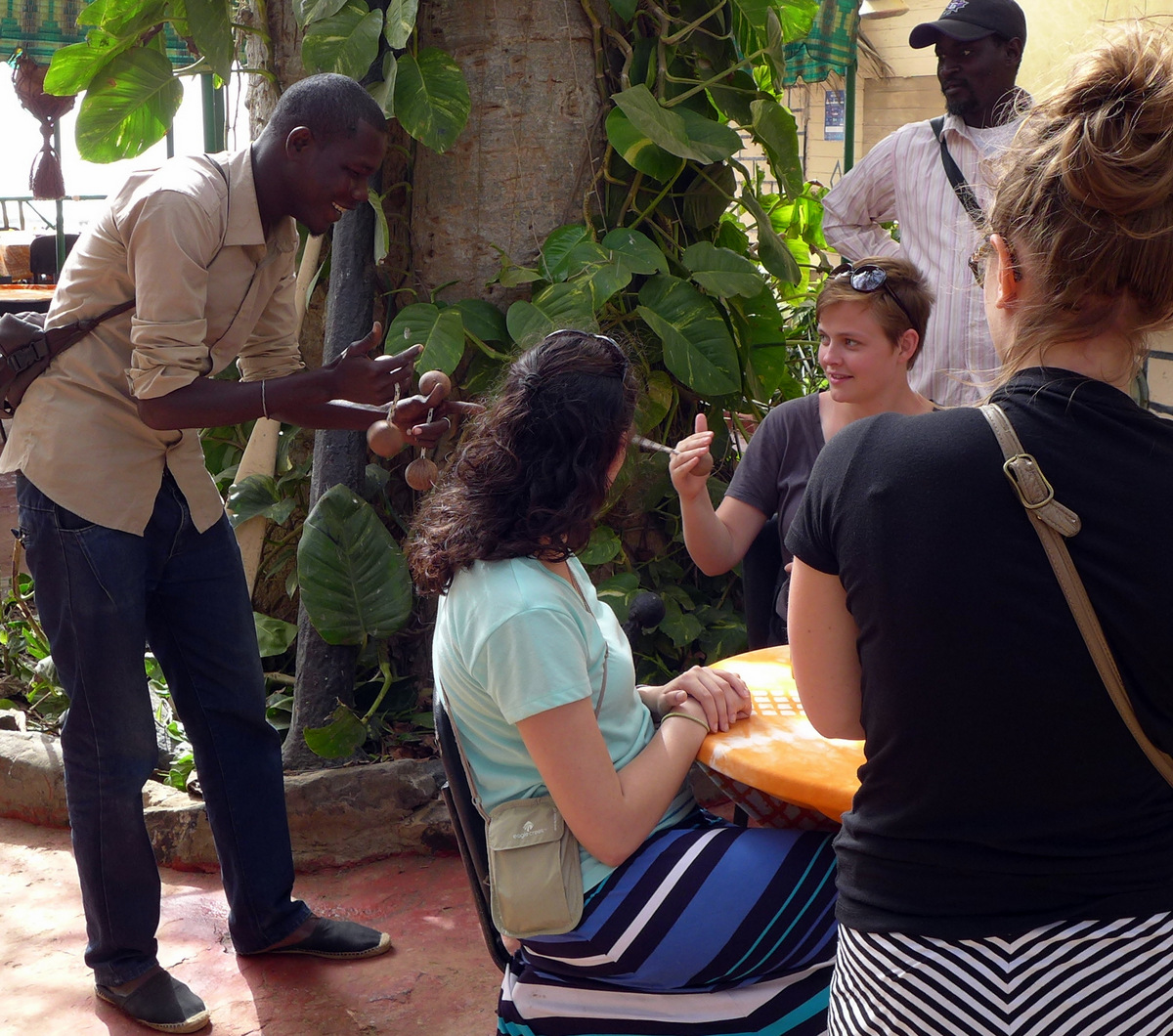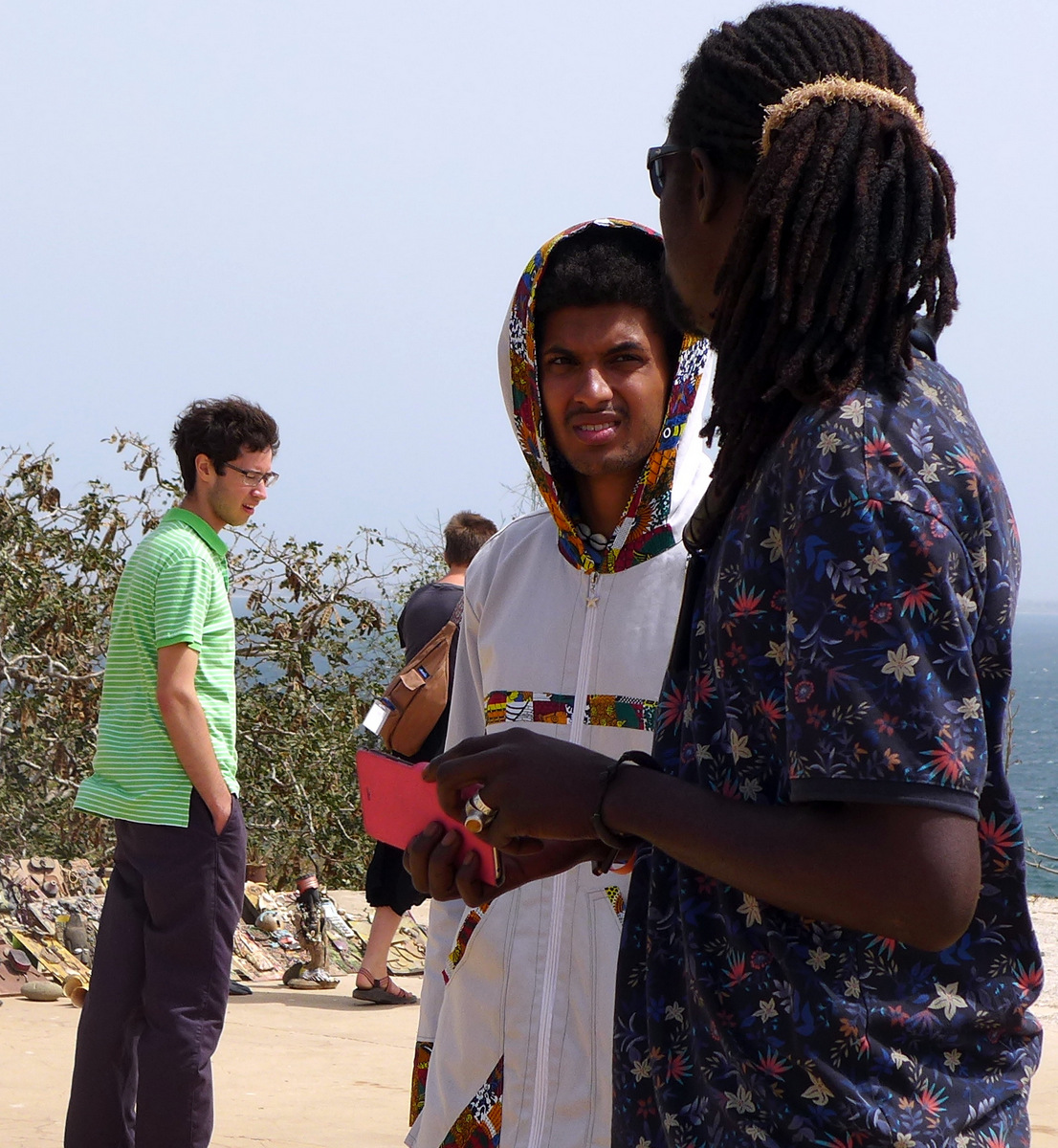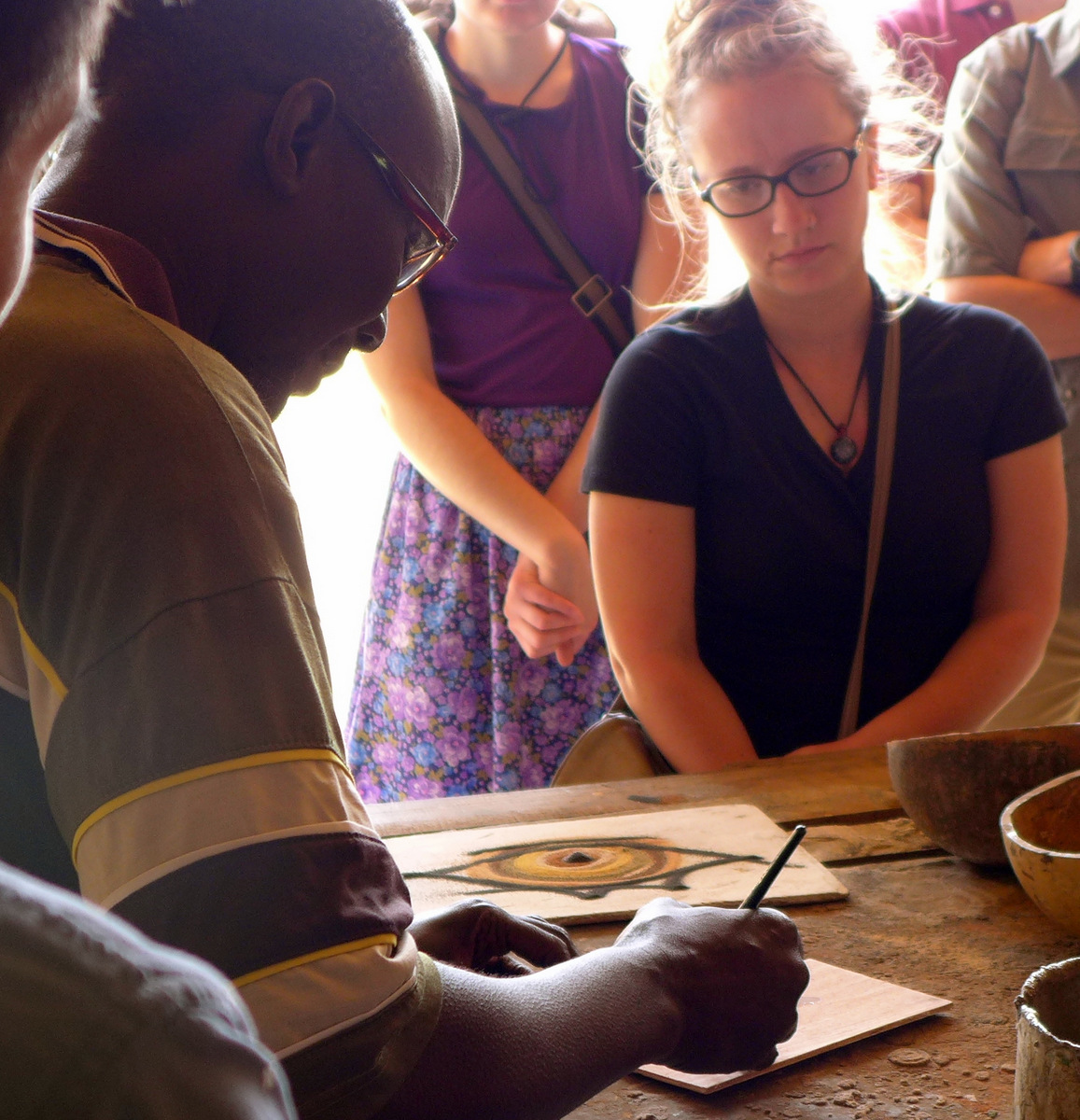Exploring Dakar and Gorée Island
Very early Wednesday morning we boarded our trusty bus to head to Dakar for the day. Traffic wasn’t quite as bad as we had anticipated so our early start paid off with some time for students to enjoy the rocks and surf of this western-most tip of the African continent. Some managed to get quite wet (of course) but things dry quickly here. We walked to the University from there in time to meet our speaker for the day, Dr. Ibrahima Thiaw. He is a prominent archeologist who has spent many years exploring new understandings his projects on Gorée might bring to the history of the slave trade and the surrounding cultural context there.
Then a walk back to the ocean and Le Musée de la Femme, a museum that highlights the activities and contributions of women in Senegal. By the time we were done with the tour there many of us were flagging from the early morning and we agreed it was time for a break and lunch!
Revived, we took a walking tour of the sites of downtown Dakar, including the cathedral, a tour of the IFAN museum (perhaps the oldest art museum of West Africa), seeing the presidential palace and other government buildings and ending with Marche Kermal, the beautifully restored covered market for all things food and, surprise, souvenirs!
We were going to miss Festigraff on our original schedule, but a happy outcome of moving this field trip meant that we were able to catch the last day. We did enjoy lots of new graffiti art around the city that resulted from this festival earlier in the week, and here at Douta Seck we were welcomed by organizers to see an art exhibit, explore the many stalls of … well … all SORTS of things, and enjoy competitions of DJ’ing, dance and free-style rap on the stage. As we just happen to have a very talented free-style rapper in our own group, Malcolm was able to showcase his style on-stage with the other performers! He was amazing (of course!) and the organizers were taken enough our group to bring out platters of food for us. It was an awesome way to finish our tour of Dakar.
Night and breakfast was at the Lutheran guesthouse, then back on the bus for the short ride to the port to catch the ferry to Gorée Island. Gorée is a beautiful island with an ugly and complicated history. Gorée is a UNESCO world heritage site and all the buildings are from the colonial era. Bright colors, beautiful old buildings, narrow alleys, winding streets, a permanent population of a couple thousand people and lots of tourists from Senegal and all parts of the world. Gorée was one of several locations on Senegal’s coast that served the slave trade. Slaves were brought from all over West Africa and held on Gorée before being loaded into ships never to return. This is a sobering place indeed, and one struggles with how to understand the depths of this horror that continued for over 400 years.
There is a thriving artist community on the island eager to show you — and sell you! — their work and even demonstrate their skill. We had a lovely lunch at a sea-side restaurant before taking the ferry back to Dakar and the two hour bus-trip back to Thiès and our homes.









